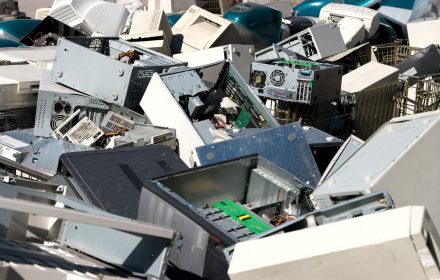These days, all businesses rely on electronics to some degree to get by. One of the challenges with this is that electronics have a lifespan. It isn’t a question of if they will one day fail; it’s simply a question of when. Purchasing managers, IT managers and business owners need to be prepared for when that day comes and have a plan in place to ensure continuity.
This is especially important for industries such as legal and financial services that manage a tremendous volume of sensitive client data. Device downtime can introduce security threats that can compromise the very trust upon which your entire business is built.
By planning for your electronics’ lifecycle, you can make practical decisions that work for your business. Here are some considerations to help you manage business electronics.
Device Life Expectancy
Whether it’s a phone, laptop, printer or some other device, they all have an expected lifespan. A quick Google search will often reveal the expected time horizon. You should factor this into your lifecycle planning. If the laptops you’ve purchased are expected to begin to fail after three years, for example, you can begin planning for how you will address that at the time of purchase, which gives you a three-year runway to execute against your device end-of-life plan.
Equipment Performance
Over time, your electronics’ performance will begin to wane, and this will happen before they fail entirely. Your devices may function more slowly, crash unexpectedly, or display a wide range of other symptoms. In all cases though, you should treat these symptoms as leading indicators that it might be near time to repair or replace your devices.
Repair versus Replace
The repair versus replace decision can be a challenging one. To make it properly, it is important to conduct a proper financial analysis to determine whether the relatively shorter lifespan you can expect from repairing your devices is worth the cost savings when compared to the longer lifespan you can expect from replacing your electronics with new equipment.
If, for example, you can save 50% of the cost of a new device by repairing an existing one, but the repair has a lifespan that is only 25% of the new device’s lifespan, then it may be worth it to simply purchase new. The same is true if the cost to repair a device is similar to the cost of just replacing it outright.

Replace versus Upgrade
If you decide to replace your device, you then face another decision, which is to replace your electronics with a similar model or to upgrade them to something newer or higher-performing. Again, the decision ultimately comes down to your finances; if you have the funds available to do either one, then will the upgrade deliver disproportionately higher performance as compared to your current equipment?
Sometimes, the decision will be made for you; when your existing products are no longer available for purchase, you may be forced to upgrade. Other times, however, it can be worth crunching the numbers to find out whether an upgrade makes sense, or whether it’s best to simply stick with your current tier of electronics.
Responsible Electronics Disposal
Responsible disposal of end-of-life electronic devices has two facets: ensuring that your electronics are disposed of or recycled in as environmentally-friendly a manner as possible, and ensuring that you have safeguarded against any potential data breaches associated with disposing of your electronics.
In the case of the former, it is important to work with a certified electronics recycling company to ensure your devices aren’t unwittingly ended up in a landfill somewhere. In the case of the latter, it can be well worth working with a data destruction company to ensure the security of your data when recycling your electronics. Considering that over30% of all data breaches stem from end-of-life electronics and that the fines associated with such breaches can be substantial, this is a step you can’t afford to ignore.
Conclusion
It makes both business and financial sense to have a clear plan in place for when your electronic devices reach the end of their lifecycle. With careful planning and some basic research, you can arrive at a plan that works for your business and protects you against both downtime and potential cybersecurity disasters.
Mayer Alloys Corporation is an R2 compliant provider in partnership with OmniSource Electronic Recycling, an R2 Certified Recycler. Mayer will provide you with peace of mind that you are disposing of your organization’s electronic waste safely and responsibly. All electronic waste is recycled in an R2 Certified facility. All hard drives are destroyed and Certificates of Destruction in compliance with Department of Defense (DoD) security standards are provided. For more information about electronic recycling


